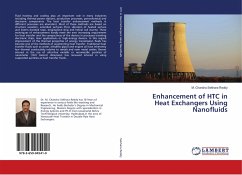The overall objective of this research is to present a complete numerical approach for the study of TCSA. For this, three specific objectives were defined: i) improvement of the computational model, developing the Compact Computational Model (CCM); ii) definition of the Energy Performance Indicator (EPI) dedicated to the analysis of TCSA; and iii) application of the Constructive Design method, associated with the CCM and the EPI, in a case study of TCSA in a "Y" shape. The results showed that it was possible to: (i) validate and verify the CCM, which presents, among other improvements, the decoupled treatment between the thermal and fluid-dynamic problems, the reduction of the processing time and the possibility to numerically simulate the TCSA in any region of the planet; ii) to prove the effectiveness of PPE, allowing with a single indicator the performance of TCSA to be evaluated, considering thermal and fluid dynamic parameters; and iii) to define the optimal TCSA configuration in "Y", generating a monthly electric energy economy of up to 117.72 kWh (heating), in cold periods, and 74.13 kWh (cooling), in hot periods.
Bitte wählen Sie Ihr Anliegen aus.
Rechnungen
Retourenschein anfordern
Bestellstatus
Storno








